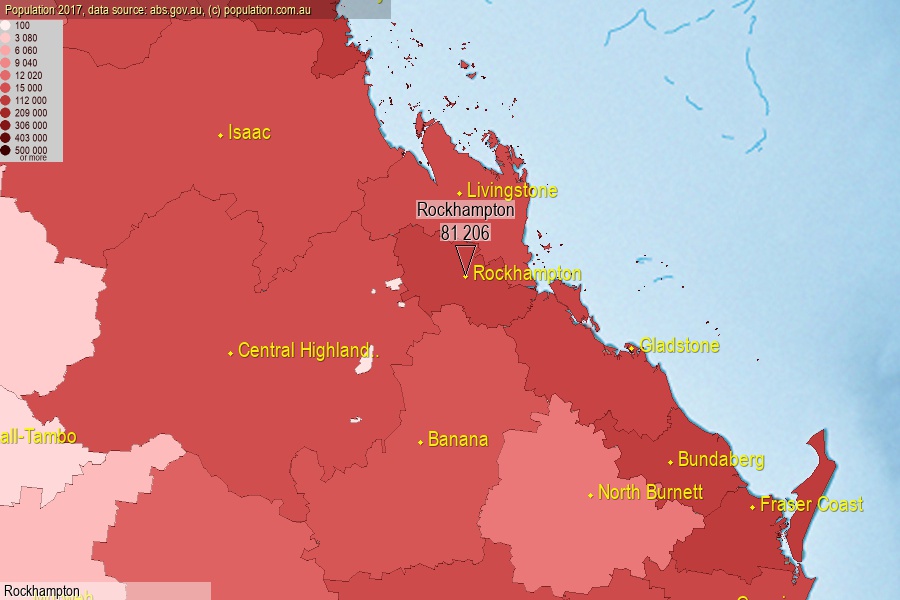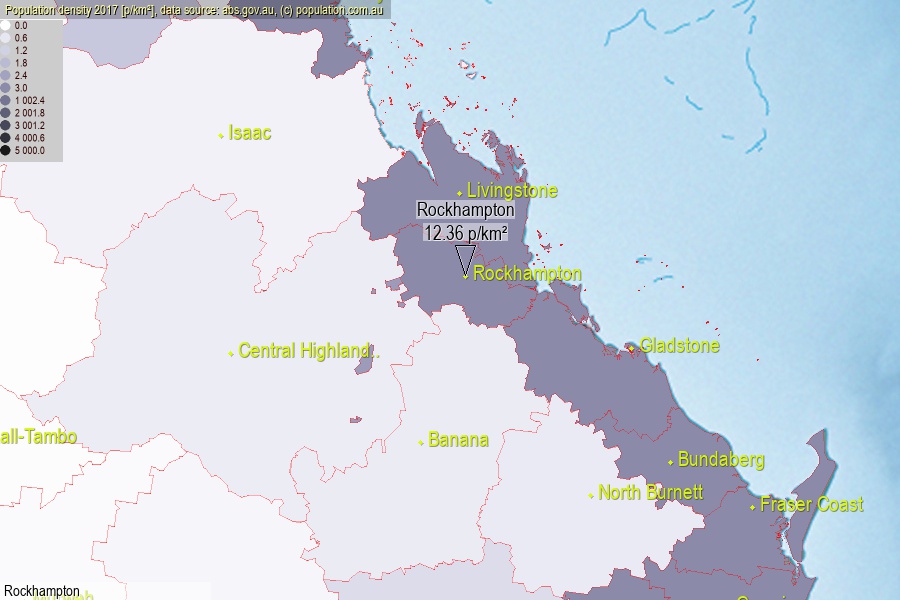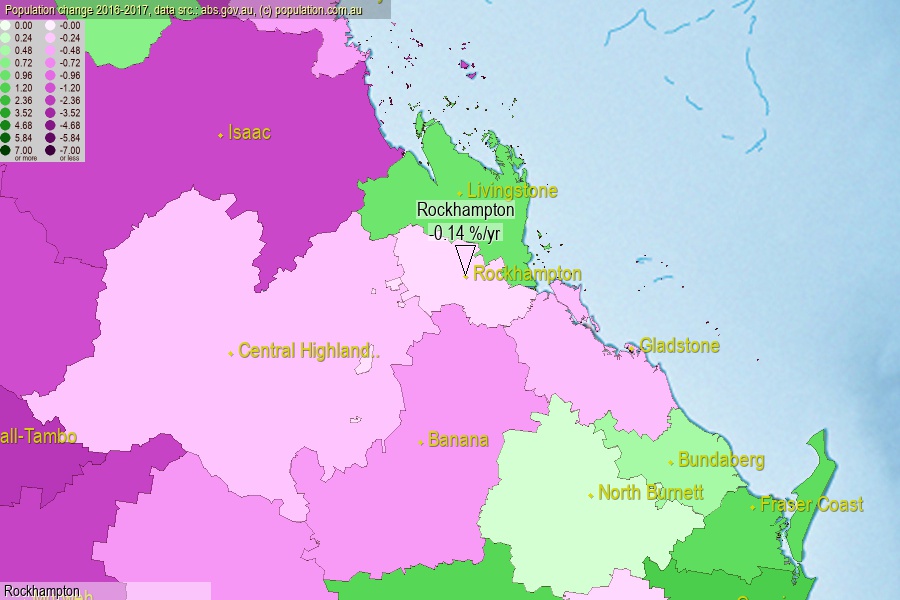 population.com.au
population.com.auLast official estimated population of Rockhampton Regional Council (as Local Government Area) was 81 206 people (on 2017-06-30)[2]. This was 0.33% of total Australian population and 1.627% of QLD population. Area of Rockhampton is 6 570.30 km², in this year population density was 12.36 p/km² . If population growth rate would be same as in period 2016-2017 (-0.14%/yr), Rockhampton population in 2025 would be 80 284. [0]



Click to enlarge. Rockhampton is located in the center of the images.
Population [people], population density [p./km²] and population change [%/year] [2]
[2001-2002] +0.61 %/Y
[2002-2003] +0.83 %/Y
[2003-2004] +1.29 %/Y
[2004-2005] +1.06 %/Y
[2005-2006] +1.39 %/Y
[2006-2007] +1.34 %/Y
[2007-2008] +1.43 %/Y
[2008-2009] +1.54 %/Y
[2009-2010] +0.96 %/Y
[2010-2011] +0.95 %/Y
[2011-2012] +2.05 %/Y
[2012-2013] +1.48 %/Y
[2013-2014] +0.48 %/Y
[2014-2015] -0.13 %/Y
[2015-2016] -0.86 %/Y
[2016-2017] -0.14 %/Y
[0] Calculated with linear interpolation from officially estimated population
[1] Read more about LGA and Australian Statistical Geography Standard (ASGS) on abs.gov.au
[2] Population data from Australian Bureau of Statistics (Population and density: 2017; change: 2016-2017)
[3] Digital Boundaries: Australian Statistical Geography Standard (ASGS) 2016.